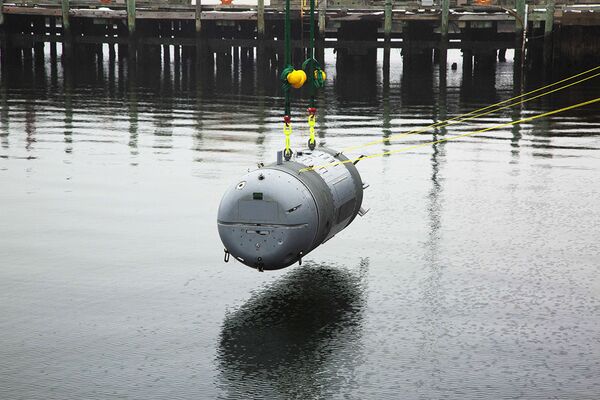
The single Snakehead prototype was built under LDUUV Phase 1 (US Navy)
The US Naval Undersea Warfare Center (NUWC) Division Newport has revealed an end-to-end demonstration of a so-called intelligence preparation of the operational environment (IPOE) mission involving the Snakehead Large Displacement Unmanned Undersea Vehicle (LDUUV) prototype.
Undertaken at the Narragansett Bay Test Facility in Newport, Rhode Island, in July, the test scenario was designed to build confidence in the vehicle software and hardware systems ahead of more complex extended endurance operations and additional system capability, according to the NUWC.
The Snakehead prototype, built under Phase 1 of the LDUUV programme, is a modular, reconfigurable, multimission undersea vehicle incorporating undisclosed hull materials and certified lithium-ion batteries. While plans for a follow-on Phase 2 production programme were cut from the US Navy's (USN's) fiscal year (FY) 2023 budget, NUWC is continuing risk reduction and fleet experimentation with the prototype as it seeks to mature undersea autonomy technologies.
According to a NUWC Division Newport statement, during a 21 July IPOE sortie the Snakehead LDUUV – implementing the Draper Laboratory-developed Maritime Open Architecture Autonomy (MOAA) framework – conducted a long-distance ingress, performed a sonar survey box, and then egressed back to the test facility to demonstrate “a new milestone in total sortie endurance”.
While no specific details of sortie range or duration were released, the NUWC revealed that the vehicle collected sonar data utilising technology from the Pennsylvania State University Applied Research Laboratory.
Looking to read the full article?
Gain unlimited access to Janes news and more...







